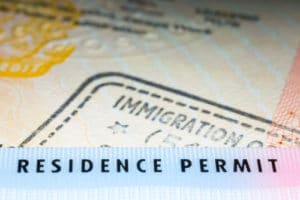Understanding How Ineligible People Come To Canada On A Temporary Basis
Some people require entry into Canada but lack the ability to do so under Canadian law. In compelling circumstances, the law allows for entry for a short term. With TRP applications, individuals present compelling reasons for entry. The Canadian government balances the reasons, risk and benefits to Canada before granting a Temporary Resident Permit. The immigration lawyers at Kahane Law Office, help people with TRP applications.
What Can I Do to Gain Entry?
Although, you may think, you may not get into Canada because of a misstep with the law, there may still be a way to get it through the Temporary Resident Permit.
TRP allows you to suspend what a Canadian law refers to as “criminal inadmissibility”, there must be compelling reasons for entry. Such applications always demonstrate that entry and temporary stay poses no safety and health risks. TRP applications always include supporting rationalization with a justifiable significant reason for your desired entrance with clarity and specificity.
Acceptable examples for entering Canada that would be considered include: business conferences and networking events, meeting with Canadian clients or companies to start or continue economic relationships, or a very important family event such as a funeral or wedding.
Am I Eligible to Apply for a TRP?
TRP applies to someone convicted of a criminal offence and:
- Have had less than five years pass since the completion of the sentence (including jail time, community service hours, probation and fee payment), OR
- Have had more than five years pass since the completion of the sentence, and you have not applied for, or have yet to receive a decision on an application for criminal rehabilitation.
What are Valid Reasons to Obtain a TRP?
Valid reasons to obtain a TRP may include:
- Travel for work
- Visit an unwell family member
- Attendance of a family wedding or a funeral
What is the Duration of a TRP?
Once TRP Applications are approved, the duration for stay varies. Generally, the maximum amount of time that may be granted is 3 years. Based on the reasons for entry you could receive permission to stay for a few days, few weeks, or few months, based on your reasons for travel. The decision is made by the Canadian immigration officer or border agent who processes your application.
Two types of TRPs are available: single-entry and multiple-entry permits.
Single-entry permits, as the name suggests, allows you to enter Canada only once. Once it expires you must leave. A single-entry permit may event on a specific date, such as a wedding or business conference.
Multiple-entry permits receiving permission to stay in Canada for an allocated time span. They allow you to enter, leave, and re-enter as many times as required during the time of its validity. These permits expire after the allocated time span. Those that need to travel to Canada for work frequently and often at short notice, such as flight attendants or pilots, are more likely to receive a multiple-entry permit.
After your TRP has expired, your record will once again prevent you from entering Canada. You can then reapply for a TRP or opt for the permanent solution of a Criminal Rehabilitation application.
What Is The Processing Time And Cost For TRP Applications?
The processing times for TRPs depends on the method of the application’s submission. Applications submitted at the port of entry receive an “instant” determination. In most circumstances, this submissions typically take under two hours. In contrast, applications submitted to at the Consulate may take up to one (1) year for a decision.
The processing fee to apply for a TRP is $200 CAD at the Canadian Immigration office or at any Port of Entry.
Where You Make A TRP Applications?
After you have gathered all the required documents and completed your TRP application, you must then submit it to the Canadian government for consideration. If you are an American citizen or have permanent resident status in the United States, there are two places you can submit your application:
- To a border agent at the Port of Entry (POE) as you cross the border, or
- To the Canadian Consulate in Los Angeles, California.
What Is The Difference Between TRPs and Criminal Rehabilitation?
An individual only becomes eligible for criminal rehabilitation once five years have passed since the completion of their sentence, including jail time, termination of probation, and payment of all fines.
The primary difference between a TRP and Criminal Rehabilitation is that a TRP only temporarily suspend an individual’s criminal inadmissibility for the purpose of travel into Canada. Criminal Rehabilitation completely resolves an individual’s criminal inadmissibility for the purpose of travel into Canada. With Criminal Rehabilitation, an individual may enter and exit Canada freely and without limitation.
An individual applying for Criminal Rehabilitation does not need to demonstrate a necessity to enter Canada. The person must only prove, they have been rehabilitated and will not re-offend. With a TRP, an individual must apply to enter Canada and demonstrate a valid need.
Since Criminal Rehabilitation applications are processed only by Canadian Immigration at the New York Consulate, the processing time can take up 12 months. In contrast, TRPs are about 6 months and handled in Los Angeles. However, the processing of your application takes place, you retain the ability to apply for TRP if you need to travel into Canada. In fact, if you already applied for Criminal Rehabilitation in conjunction with applying for a TRP at the port of entry, it often increases your chances of a TRP approval.
How We Help With TRP Applications?
Please call about applying for a TRP to visit Canada or to submit an application for Criminal Rehabilitation. The seasoned experts at Kahane Law are here to help with TRP applications. I invite you to contact one of our immigration professionals at 403-225-8810 or 1-877-225-8817. We’ll be glad to assist you.

